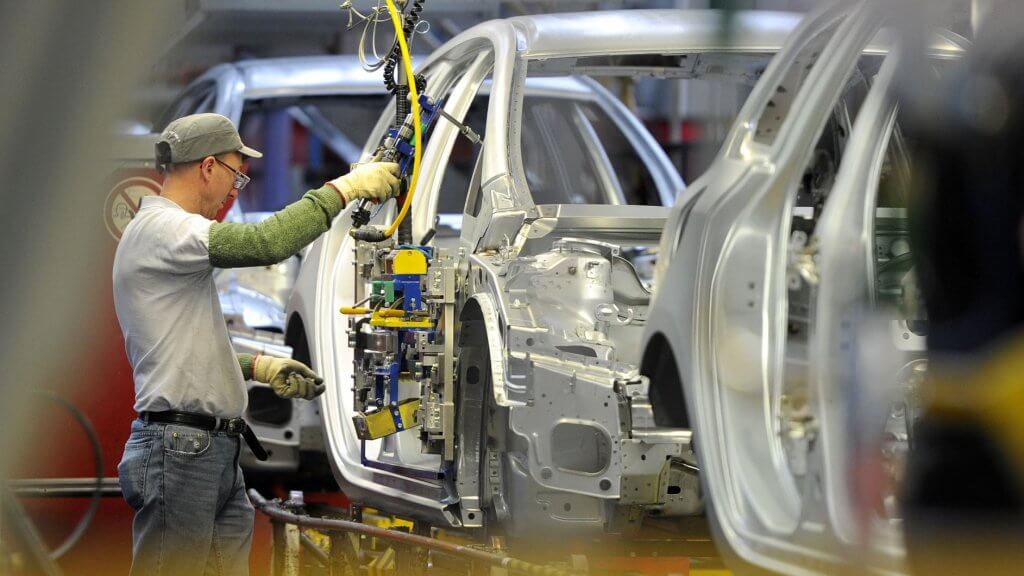Operational Agility: How 2020 Has Manufacturers Seeking To Pivot To Different Business Models

Historically, manufacturing has tended to be a rigid and traditional industry, intent on internal efficiencies, but the latest pandemic has proven that this cannot continue.
These businesses are grappling with the need to leverage the data and digital platforms they have to ensure their revenue streams are able to keep pace with the peaks and troughs of the extremely variable demand cycle, with technology as its support structure.
The recent pandemic has already seen a re-focus on local production with, of course, PPE equipment, medicines and medical devices leading the way, as well as ongoing digital transformation projects aimed at improving flexibility.
A new level of agility is required across the business, as market conditions continue to change. As a result, manufacturers are having to make changes in what they sell and how they sell, which has led many to adopt new business models to drive new revenue streams.
In truth, new business models exposing new revenue streams are about risk mitigation and opportunities for growth. Manufacturers need to have the ability to react to those ‘strong economic headwinds’, and to accommodate any disruption, because the new normal is that they will happen.
Manufacturers need to look beyond what they produce, to focus on how they sell to, and engage with customers and prospects, based on the customer’s preferences.
What COVID-19 demonstrated is that when under pressure, many companies’ current operational models were not prepared or agile enough for such huge fluctuations. Embracing digital selling channels over traditional customer engagement activities is evidently going to have to take priority.
The era of B2B2C eCommerce
Many manufacturers are now realising they need to be geared up to offer a self-sufficient eCommerce channel embracing a business-to-business-to-consumer (B2B2C) model better serving customer demands.
They can no longer assume that marketing and selling is the responsibility of their dealers and distributors but must seek to understand and respond more rapidly to consumer behaviour and business trends in order to streamline the buying experience for the end-customer.
Talking about transforming their sales structure is no longer optional, it has to happen without delay.
Consumers expect transparency more than ever before, and value the ‘social scorecard’ of a brand’s entire supply chain, including manufacturers, and their competitors when making purchasing decisions.
They expect personalisation, speed and consistency when engaging across multiple channels, and potentially across multiple geographies.
More companies are investing in emerging technologies, like artificial intelligence (AI) and machine learning (ML), that support digital transformation and allow them to be more reactive, proactive and predictive to customer needs, to be agile to changing market conditions and to stay ahead of competitors.
The ‘new’ manufacturing
As manufacturers move through the remainder of the year and beyond, they will look to share and spread risk across multiple sources.
From pricing to supply chain to finding alternative ways to drive revenue growth, sales and customer data are critical to enable a manufacturer to understand the impact disruption has across all channels and better anticipate future trends in demand.
We’ve already seen many different industries within manufacturing pivoting to improve profitability when faced with disruption:
The chemicals industry has experienced significant supply chain disruption. Over the last several years, offshoring mass chemical manufacturers to China has been a common practice.
Given the current pandemic climate, that single source is now seen as a potential risk to availability. Many companies therefore are looking at multiple sources of supply to offset that risk, which has implications for raw material costs in a constantly changing scenario.
Rolls Royce is a famous example. A number of years ago they started to charge for engine maintenance by hours flown instead of selling parts. They called it ‘Power-by-the-hour.’
Cue March 2020 and this obviously isn’t a viable business model any longer because for a time, they’re not actually flying. So, as a business, it’s important to have the data available in order to deal with unexpected challenges that could impact their business models.
Many manufacturers are now following a similar path, for example Medical Device manufacturers with equipment used in a testing capacity are shifting towards a model whereby they structure their sales models off of the number of tests carried out rather than as a capital purchase.
These ‘as a Service’ models mean that usage fees are matched more closely to a shared success metric, which continue irrespective of whether new equipment changes hands.
Digital transformation has often meant multi-year, multi-department, companywide initiatives to improve the profitability, growth and efficiency of a manufacturing business. Informed by recent experience Manufacturing as we know it has forever changed.
It’s no longer acceptable to model and plan in year long periods. In order to drive true transformation, these companies must increasingly think in days and weeks, focusing on the process of delivering the best possible buying experience to their customers in the here and now.
In other words, they must transform their business processes to be able to act consistently and dynamically, collecting data and selling through all channels, in order to survive during any crisis that comes their way.
Will Lovatt, General Manager, Europe at PROS.




